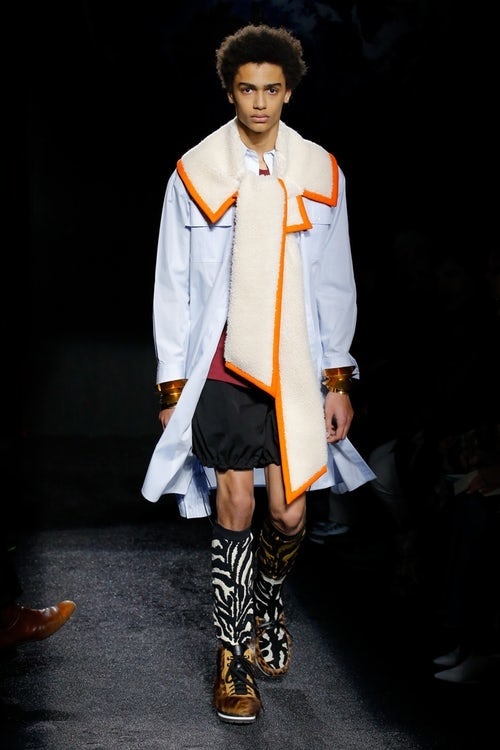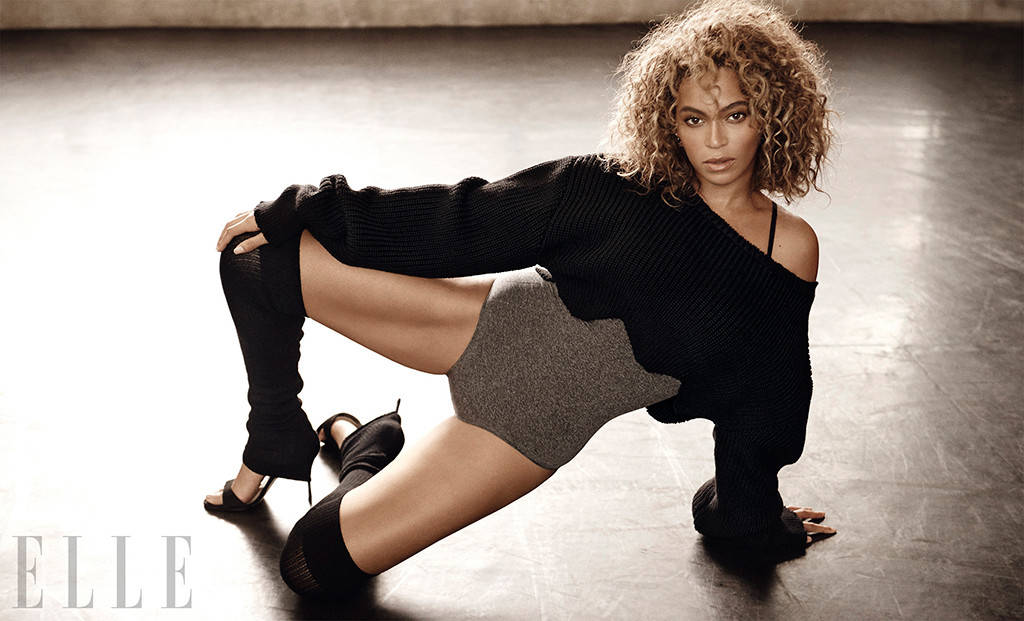
It’s been a bleak time for men as the lascivious ogres of media and politics, who were exposed by the #MeToo movement, sullied the collective reputation of the male gender. Lamenting the ills of “toxic masculinity” has become a favourite pastime among both media critics and public observers — and rightly so, as the women who suffered at the hands of abusive men can attest. Yet something important and even encouraging has been lost in all of the furore: a new generation of 21st century male icons have emerged — and a new form of masculinity with it.
An internet buzzword used to describe handsome young males of a certain persuasion, “little fresh meat” made headlines last year across China and the wider Asia region. It refers, in particular, to men who appear boyish in nature — often androgynous, sometimes overtly effeminate — and possess delicate, elfin features, but their ascension is nothing to sneer at. With an appeal that often spans both genders, they’re able to generate notable sales for the fashion and beauty brands they work with.
Luhan, dubbed the “Chinese Justin Bieber” (although probably a reference to Bieber in the more clean-cut days of his early career), is one of the foremost poster boys of this phenomenon. According to Gartner L2, L’Occitane’s launch of themed gift sets, featuring the Chinese singer in 2017, contributed to a 250 percent increase in quarterly online sales in China. Data from the research firm shows that nine out of the top 10 beauty brand Weibo posts with the most engagement between January and November 2018 featured a male “young fresh meat” celebrity.
While girls are taught that their identity can be more fluid, boys are often told to toughen up and take things ‘like a man.’
The most popular of these, Gartner’s senior editor of research Liz Flora told BoF, was Givenchy Beauty’s announcement of Jackson Yee, a member of the Chinese boy band TFBoys, as its new brand ambassador, which earned over 12.9 million interactions on the Chinese social media platform. Meanwhile, Chinese cosmetics brand Chando saw a sales spike on Alibaba-owned Tmall from its TFBoys face-mask set sold on Singles’ Day last year. Groups like BTS in South Korea, where such types of men are called “flower boys” or kkonminam, have driven online traffic to brands like Chrome Hearts and Moschino.
In countries like China, where there are still a multitude of issues hindering gender equality, like pronounced wage gaps and imbalanced political representation, the popularity of “little fresh meat” is a significant movement, because it allows for new representations of masculinity on screen. But the adoption of this aesthetic in male beauty is also representative of a worldwide shift: think Timothée Chalamet, who has become one of the dominant heartthrobs of his generation. There are also actors such as Ezra Miller, Tye Sheridan, Lucas Hedges and Alex Lawther, or singers like Troye Sivan and Harry Styles, who fit the bill.
Blurring Gender Roles
When one thinks of the traditional masculine ideal, the image is one that tends to be “more stoic,” said Robert Cserni, programme director at the Center for the Study of Men and Masculinities (CSMM), located within Stony Brook University in New York. “It’s been about men who never back down. It’s physically imposing and about being in control. No sissy stuff.”
Indeed, masculinity has traditionally been presented as a kind of elite fraternity where not every man qualifies — and the hazing begins early. While girls are taught that their identity can be more fluid, boys are often told to toughen up and take things “like a man.”
Some parents feel proud when their daughters eschew dolls and dresses to play sport or build things, said Cserni, almost as if their little girls were swiftly learning how to “lean in,” but many still find it unsettling if their sons were to trade football for fashion. And when boys stray from the narrow script, they typically get bullied. Even later in life as adults, men will often go to lengths to prove their masculinity to each other, whereas women enjoy a much wider gamut of acceptable intragender behaviour.

Androgynous or queer-friendly male style icons aren’t a new phenomenon. Personalities like David Bowie, Prince and Kurt Cobain have long challenged gender stereotypes. There have also been key moments in men’s fashion where women’s trends have hit the mainstream, and designers from Jonathan Anderson to Martine Rose and Grace Wales Bonner consistently subvert gender binaries with their interpretation of masculinity and femininity.
But when it comes to mainstream marketing, there’s still some way to go. Surveys conducted by CSMM found that only 7 percent of men globally relate to the way masculinity is depicted in the media. Meanwhile, a recent study commissioned by The Book of Man revealed that 69 percent of men in the UK feel misrepresented by brands.
In the past, generally, “male sensitivity has often equated to weakness or vulnerability,” said Eliot Haworth, assistant editor at Fantastic Man, a semi-annual men’s fashion magazine. “I’m not sure sensitivity is still wholly societally acceptable — see conversations around ‘snowflakes’ — but it is certainly something that has become more widely accepted,” he continued, crediting this shift to the #MeToo movement as well as increasing feminism and mental health advocacy. “To be in touch with one’s emotions [and] conscious of how your actions affect others and yourself can all become part of the modern man.”
British department store Selfridges led the charge in 2015 by launching a unisex shopping concept, “Agender,” taking up three floors inside its stores. More recently, retailers like Target and Harrods have started to rethink their store layouts and are confronting requests for children’s clothing to be gender-neutral.
Men’s clothing retailer Bonobos launched a campaign last summer to #EvolveTheDefinition of masculinity. The 90-second clip shows several men reciting a dictionary definition of the word, which mentions “strength” and “aggressiveness,” and then offering new suggestions that are more inclusive and reflective of reality, with one saying, “it’s more a question of what does it mean to be human.”
Only 7 percent of men globally relate to the way masculinity is depicted in the media.
Harry’s has also evolved their previously lad-like approach to more sophisticated campaigns that explore the meaning of modern masculinity. In 2018, a survey of 5,000 men in the US was conducted by the razor brand in partnership with Dr. John Barry, honorary lecturer at University College London and co-founder of the Male Psychology department at the British Psychological Society.
“In contrast to outdated [concepts] that we’ve previously seen inform products marketed towards men, we learned that — overwhelmingly — men care more about being honest, reliable and dependable, rather than muscular or athletic,” Andy Katz-Mayfield, co-founder and chief executive of Harry’s, told BoF.
Turning the Male Gaze On Its Head
“Gender identity as a concept has been blown open in recent years,” said Jack Duckett, associate director for consumer lifestyle research at Mintel, a research firm. “The traditional paradigms of what is a male or female life trajectory have not disappeared, but they are no longer working for men today — certainly not younger men.”
Some observers say the evolution of women’s rights is driving this shift in men. “Society has changed tremendously in a relatively short period of time [and] women have been the main catalyst of this,” said Cserni. “Meanwhile, masculinity as an ideology got stuck behind.”
He also pointed to the increasing number of mental health disorders within the male population. According to 2017 statistics in Psychology Today, men make up over 75 percent of suicide victims in the United States, with one man killing himself every 20 minutes. Cserni highlighted Naomi Wolf’s bestselling book “The Beauty Myth,” which looks at how images of beauty are used against women. “Women were subjected to the male gaze for centuries, but now, it’s being directed back at men,” he said.

Today, this is a conversation that brands are less afraid to have and forward-thinking companies are targeting men by appealing to their emotions rather than their physicality. Perhaps more importantly, as gender fluidity continues to grow and LGBTQI rights expand in Western society, the assumed or apparent sexual orientation of the men whom brands target for campaigns or partnerships is finally becoming less important.
For Dean Cook, head of menswear buying at Browns, the challenges with masculinity are much more endemic than how brands market their products. Speaking to BoF, he observed that masculinity touches aspects of everyday life and therefore this holistic approach is how he approached the buy for the London-based luxury retailer, which is taking on labels from Vaquera and Pyer Moss to Rapha and Pas Normal Studios this season. “We’re looking at a man in every aspect. No matter what he does, we’re looking at this [and asking] how can we engage with a man’s world?”
“An old Esquire [magazine] from 1975 [has] adverts like whisky, life insurance and watches heaped on by the bucket load. The status symbols have now changed. Today, they’re more likely to be value-based, like sustainability or cultural sophistication,” said Harry Jarman, founder and editor-in-chief of the Gentleman’s Journal. However, he questioned brands that were using socially conscious or “woke” marketing to appeal to younger consumers. “I hated that Gillette advert,” he said, referring to the razor brand’s latest campaign launched in January.
Engaging with the #MeToo movement, the campaign played on Gillette’s 30-year tagline “The best a man can get,” replacing it with “The best men can be.” Featuring news clips of reporting on the #MeToo movement, as well as images showing sexism in films, in boardrooms and of violence between boys, it immediately went viral with more than 4 million views on YouTube in 48 hours and generated both lavish praise and angry criticism.
The backlash came from personalities like Bernice King, daughter of the late civil rights legend Martin Luther King, and James Wood, the Emmy-award winning actor and prominent Donald Trump supporter, who called for a boycott of Gillette owner Procter and Gamble’s products, saying that the commercial emasculated men. The real problem, said Fantastic Man’s Haworth, wasn’t that it was “unfair” or “insulting” as many observers had cried, but “it was tone deaf.”
Men care more about being honest, reliable and dependable, rather than muscular or athletic.
“Brands have realised that it can be financially lucrative to align themselves with the growing change in cultural sentiment towards race, sexuality and other issues. However, when it’s a commercial endeavour, there’s a fine line,” he continued. “Appearing to genuinely care about the cause you are promoting and avoiding looking like you are trying to desperately exploit or ride the coattails of a movement seems to be difficult for many brands.”
“The emergence of a ‘new man’ [is] an idea that the fashion industry has been quick to capitalise on,” observed Anja Aronowsky Cronberg, founder and editor-in-chief of the Paris-based sartorial publication, Vestoj. “What should this new man wear? Surely another wardrobe is being called for?” she mused. “While men try on pussy-bow blouses and extra-long sleeves, the catalyst for [these] new looks might be more closely related to the ever-increasing commodification of everyday life and advances in marketing, than it is to any kind of new man.”
For Atip Wananuruks, fashion director at the men’s focused youth culture platform, Highsnobiety, “it’s important that men are no longer forced to hold it all in,” he said. “The way society is moving acknowledges that we’re all humans and we all have emotions and should be able to embrace them.”
“I hope this approach continues to evolve, because if we don’t, we’ll be moving backwards.”

You can check out the latest casting calls and Entertainment News by clicking: Click Here
Click the logo below to go to the Home Page of the Website
Click the logo below to follow ETInside on Twitter
Click the logo below to follow ETInside on Facebook
Click the logo below to follow ETInside on Instagram
Click the logo below to follow ETInside on Pinterest
Click the logo below to follow ETInside on Medium
Other Posts on ETI
-
Why younger women date older men
There is something about older men that has always fascinated us ladies- they could be…
-
The Worst mistakes that men make in bed
The phrase ‘idiot’s guide’ is thrown around more than an on-set pornstar when it comes…
-
X-Men fans petition Marvel to cast Dominique Jackson as Storm
After last year’s box-office bomb, Dark Phoenix, effectively ended the X-Men film franchise as we knew…
-
Why Men Sniff Their Fingers After Scratching Their Balls
Oh come on, we all do it. Here’s a situation every man will relate to,…
-
ETI Explains How Millennial Men Are Reinventing Masculinity
A few days ago I was at a co-working house in Nicaragua when the topic…
-
ETI Suggests ‘Having Sex with Men Doesn’t Make You Gay’
It’s weird to think that straight men are still asking the question, “Does having sex…
-
The Hottest Celebrities Ever Endorsed By Fitness Brands
Over the past decade or so, celebrities have been playing an increasing role in popularizing…
-
ETI Investigate The Rise of the ‘Bromosexual’ Friendship (Straight men with gay friends)
Before we get started lets us explain what the term “bromosexual” means. Anyone who is…
-
ETI List The 5 Best Sandals For Men to Wear During The Summer
It's summer. It's hot. It's sweaty. There will be no Chelsea boots or suede Oxfords.…

















